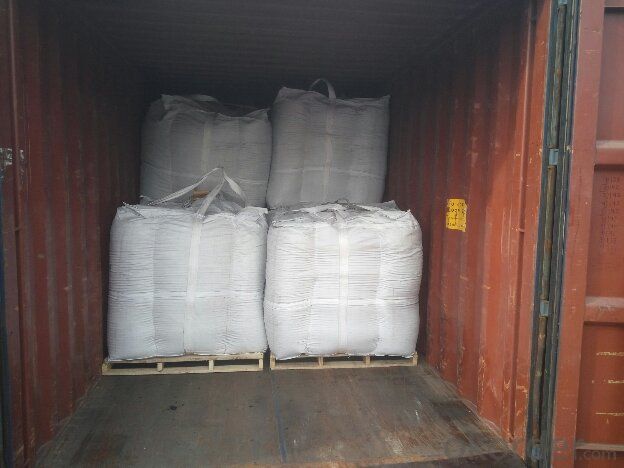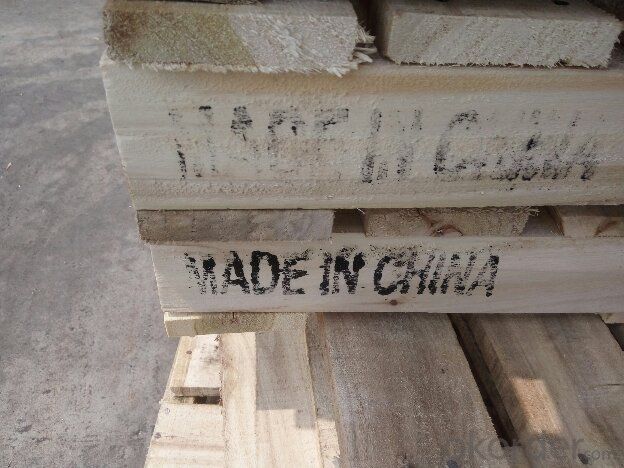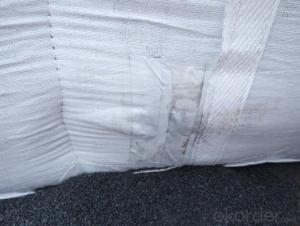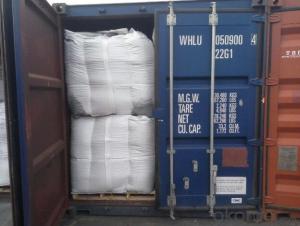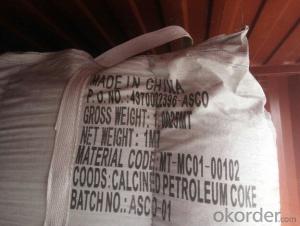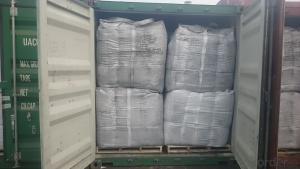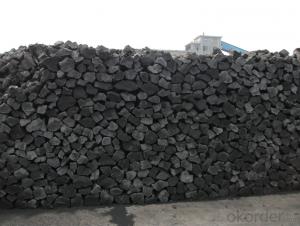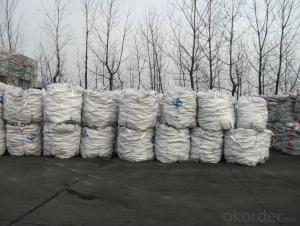Foundry Coke for Foundry Plant with Moisture 0.5% 80-120MM
- Loading Port:
- Shanghai
- Payment Terms:
- TT OR LC
- Min Order Qty:
- 21.0 m.t.
- Supply Capability:
- 1010 m.t./month
OKorder Service Pledge
OKorder Financial Service
You Might Also Like
Brief Introduction
Foundry Coke is the main fuel of melting iron in the oven. It can melt the materials in the over, make the iron reach great heat, and keep good air permeability by sustain stock column. Thus, the foundry coke should have the characteristics of big block, low reactivity, small porocity, enough anti-crush strengh, low ash and low sulphur.
The coke handled by our cooperation is made from superior coking coal of Shanxi province. Provided with the advantages of low ash, low sulphur and high carbon. Our coke is well sold in European, American, Japanese and South-east Asian markets. We welcome you to visit our factory, we supply Foundry Coke long-term, its characteristic is best strength, low sulfur and phosphorus,thermal stability.
Specifications:
ASH % | 8% max | 10% max | 12% max |
V.M.% MAX | 1.5% max | 1.5% max | 2% max |
SULFUR % | 0.65% max | 0.65% max | 0.7% max |
MOISTURE | 5% max | 5% max | 5% max |
Size | 80mm-120mm,80-150,100-150mm, or as request | ||
Features
1. Our quality is always quite good and stable which is producing and packing according to customers' requirements.
2. Putting Client profile into first, achieved mutual benefit.
3. Good partner on business. It's a good and wise choice for customers' to purchase from us. It's our great honor to cooperate with you. It is more -widely used around the world
4. We can supply documents as follows:
- bill of loading,
-Invoice,
-Packing List
-Insurance
-standard inspection pictures of the container as specified by INSPECTORATE
-or more requested by buyer.
Pictures
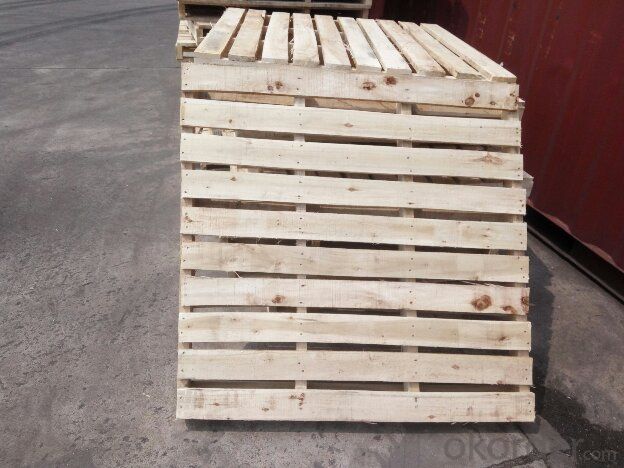
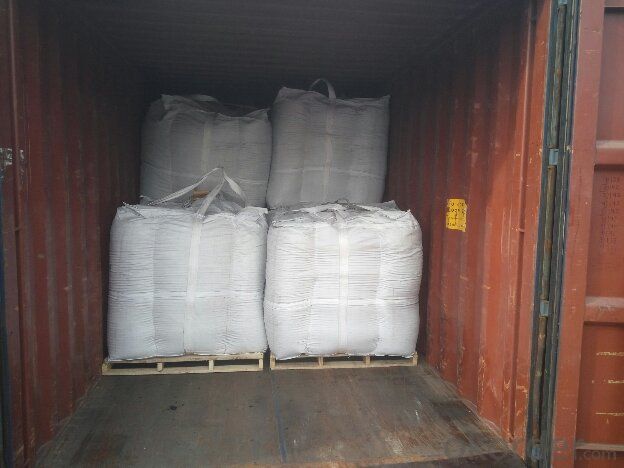
FAQ
1. What is the packing?
In 25kg bag/ In jumbo bags without pallet/ Two jumbo bags with one pallet/ or as customers’ request
2. What is the production capacity?
10 thousand tons per month
3 What is payment term?
Irrevocable LC at sight/ 20% down payment by T/T and 80% against BL copy byT/T/ or to be discussed
4 What is the service?
We will send sample to the third party(CIQ, CCIC, SGS,BV or to be discussed) for checking, and present the test certificate and loading repot of shipment.
- Q: What are the advantages and disadvantages of carbon monoxide and carbon dioxide?
- But traditional carbon monoxide inhalation has the risk of poisoning patients and medical staff by accidental inhalation of high doses of carbon monoxide. That's the advantage. Carbon dioxide is an essential ingredient in plant photosynthesis, and its increase in content is beneficial to the growth of plants. Carbon dioxide can be used as fertilizer to grow crops in greenhouse vegetables. In addition, carbon dioxide can be used as a source of oxygen in diving and aviation. Liquid carbon dioxide has a broad application prospect, the liquid carbon dioxide as extraction medium of naturally occurring compounds from certain plants or plant sources, not only does not damage the bioactive substances contained in the raw material, and the product does not contain residual medium, method for spraying liquid carbon dioxide to the airport in two fog, mist removal efficiency of hundreds of times higher than that of solid carbon dioxide.
- Q: How does carbon impact the availability of sustainable agriculture practices?
- Carbon impacts the availability of sustainable agriculture practices in several ways. Firstly, carbon emissions from various human activities, such as burning fossil fuels and deforestation, contribute to climate change. This change in climate patterns can lead to extreme weather events like droughts, floods, and heatwaves, which can negatively affect agricultural productivity. Furthermore, excessive carbon in the atmosphere contributes to the greenhouse effect, trapping heat and raising global temperatures. This rise in temperature can disrupt natural ecosystems and reduce the availability of arable land for agriculture. It can also alter precipitation patterns, leading to water scarcity or excessive rainfall, both of which can hinder sustainable agriculture practices. Carbon also plays a role in soil health and fertility. Excessive carbon dioxide in the atmosphere can be absorbed by soils, leading to increased soil acidity. This acidification can lower soil pH levels, making it difficult for crops to absorb essential nutrients. Additionally, high carbon levels can impact soil microorganisms, which are crucial for nutrient cycling and maintaining soil fertility. However, carbon can also have positive impacts on sustainable agriculture practices. Carbon sequestration, the process of capturing and storing carbon dioxide from the atmosphere, can be utilized to enhance soil health. Practices like planting cover crops, adopting agroforestry systems, and implementing no-till farming techniques can help sequester carbon in the soil, improving its fertility and resilience. This, in turn, promotes sustainable agriculture by increasing crop yields, reducing the need for synthetic fertilizers, and enhancing soil water-holding capacity. In conclusion, carbon emissions and their effects on climate change and soil health significantly impact the availability of sustainable agriculture practices. Mitigating carbon emissions and adopting practices that sequester carbon are crucial for ensuring a sustainable and resilient agricultural system in the face of climate change.
- Q: What are the different types of carbon-based plastics?
- Carbon-based plastics come in various types, each possessing distinct characteristics and uses. Among the commonly known variants are: 1. Polyethylene (PE): This plastic, available in high-density polyethylene (HDPE) and low-density polyethylene (LDPE) forms, is widely employed due to its strength, flexibility, and resistance to chemicals. It finds applications in packaging, pipes, and toys. 2. Polypropylene (PP): Renowned for its high melting point, chemical resistance, and durability, PP is a popular choice for automotive parts, appliances, and packaging. 3. Polystyrene (PS): PS, a rigid plastic, frequently features in disposable products like food containers and packaging materials. Its lightweight nature and good insulation properties make it advantageous. 4. Polyvinyl Chloride (PVC): PVC, a versatile plastic that can be flexible or rigid based on its composition, sees wide usage in construction materials, pipes, cables, and vinyl flooring. 5. Polyethylene Terephthalate (PET): PET, a lightweight and sturdy plastic, is commonly employed in beverage bottles, food packaging, and textile fibers. It is renowned for its exceptional resistance to gas and moisture. 6. Polycarbonate (PC): PC, a transparent plastic, stands out for its high resistance to impact and heat. It is often utilized in eyewear, automotive parts, and electronic devices. These examples represent just a fraction of the carbon-based plastics available in the market. Numerous other variations and blends exist, and the choice of plastic depends on factors such as intended application, desired properties, and environmental considerations.
- Q: How does carbon dioxide affect textile production?
- Carbon dioxide affects textile production in several ways. Firstly, the production of synthetic fibers such as polyester and nylon, which are widely used in the textile industry, involves the emission of carbon dioxide during the manufacturing process. This contributes to greenhouse gas emissions and climate change. Additionally, carbon dioxide is released during the combustion of fossil fuels used for energy in textile factories. This not only adds to the environmental impact but also affects air quality and human health. Moreover, the dyeing and finishing processes in textile production often require the use of chemicals that emit carbon dioxide when they break down or react with other substances. These emissions further contribute to the carbon footprint of the industry. Overall, carbon dioxide has a significant impact on textile production, primarily through the emissions generated during fiber manufacturing, energy consumption, and chemical usage. Therefore, efforts to reduce carbon dioxide emissions and transition to more sustainable practices are crucial for mitigating the environmental impact of the textile industry.
- Q: How does carbon impact the stability of savannah ecosystems?
- The stability of savannah ecosystems relies heavily on carbon, which is crucial for all living organisms and involved in various ecological processes. Carbon exists primarily in the form of organic matter, which is vital for the growth and development of plants, the primary producers in these ecosystems. In savannahs, carbon affects stability in multiple ways. Firstly, carbon dioxide (CO2) plays a significant role in regulating the global climate as a key component of the Earth's atmosphere. Savannahs have the ability to sequester and store large amounts of carbon in their vegetation and soils, thereby mitigating climate change by reducing CO2 levels in the atmosphere. Carbon is also essential for plant growth through photosynthesis. Savannah plants, like grasses and scattered trees, utilize carbon dioxide from the air to produce carbohydrates and other organic compounds. This process not only provides plants with energy but also contributes to the overall productivity of the ecosystem. The stability of savannah ecosystems is also dependent on the interaction between plants and animals. Carbon-rich vegetation serves as a food source for herbivores, which in turn support predators. The carbon cycle ensures a continuous flow of energy and nutrients throughout the food web, maintaining ecosystem balance and stability. Moreover, the carbon content in savannah soils affects their fertility and ability to retain moisture. Organic matter derived from decaying plant material improves soil structure, nutrient availability, and water holding capacity. This, in turn, supports vegetation growth and sustains the diverse array of species found in savannah ecosystems. However, human activities such as deforestation, agricultural practices, and the burning of fossil fuels are disrupting the carbon balance in savannahs. Deforestation removes carbon-rich trees and plants, reducing the overall carbon storage capacity of the ecosystem. Additionally, the release of carbon dioxide from burning fossil fuels contributes to the greenhouse effect and climate change, which can disrupt savannah ecosystem stability. In conclusion, carbon plays a critical role in maintaining the stability of savannah ecosystems. It influences climate regulation, supports plant growth, provides energy for the food web, and enhances soil fertility. However, human activities that disrupt the carbon balance in these ecosystems can have detrimental effects on their stability and overall health. Therefore, it is essential to conserve and restore savannah ecosystems to preserve their carbon storage capacity and ensure long-term stability.
- Q: How to distinguish carbon rods to identify carbon fishing rods?
- I'm also waiting to learn! It seems all very busy, the masters are not on-line
- Q: What type of carbon copy sheet can be printed on? How many copies?
- Printed in carbon free carbon paper, usuallyUpper: whiteMedium: RedNext: yellowMainly depends on how much you want to print. Generally 100 pages, such as:One copy of the two couplet is 50 copies.One copy of the triad is 33 copies.One copy of the quadruple is 25 copies.This is a five of the 20.
- Q: How to extinguish the charcoal fire?
- Charcoal air on the line, but also can use water, but there will be a lot of gases
- Q: What are the different types of carbon-based concrete additives?
- There are several different types of carbon-based concrete additives that can enhance the performance and properties of concrete. These additives are primarily derived from carbon-based materials and can be categorized into three main types: carbon nanotubes, graphene, and carbon fibers. 1. Carbon Nanotubes: These are cylindrical structures made up of carbon atoms arranged in a unique hexagonal pattern. Carbon nanotubes have exceptional mechanical and electrical properties, making them highly desirable as concrete additives. When added to concrete, they can improve its strength, durability, and toughness. Carbon nanotubes also enhance the electrical conductivity of concrete, which is beneficial for applications such as self-healing concrete and anti-static flooring. 2. Graphene: Graphene is a single layer of carbon atoms arranged in a two-dimensional lattice. It is known for its exceptional strength, high electrical conductivity, and excellent barrier properties. When incorporated into concrete, graphene can significantly improve its mechanical properties, such as compressive strength, flexural strength, and abrasion resistance. It also enhances the durability and impermeability of concrete, providing resistance against water and chemical ingress. 3. Carbon Fibers: These are long, thin strands of carbon, typically derived from organic polymers such as polyacrylonitrile or pitch. Carbon fibers possess excellent tensile strength and are widely used as reinforcements in various construction materials, including concrete. When added to concrete, carbon fibers can enhance its flexural strength, impact resistance, and cracking behavior. They also improve the ductility and toughness of concrete, making it more resistant to dynamic loads. It is worth noting that each type of carbon-based concrete additive has its unique advantages and applications. Carbon nanotubes offer exceptional mechanical and electrical properties, graphene provides enhanced strength and barrier properties, while carbon fibers enhance flexural strength and impact resistance. The choice of additive depends on the specific requirements of the concrete application and the desired performance characteristics.
- Q: How does carbon affect the color of gemstones?
- Gemstones can display a significant variation in color due to the presence of carbon. Carbon is one of the primary factors responsible for the coloration of specific gemstones. Diamonds, for instance, are a well-known example. They consist of carbon atoms arranged in a crystal lattice structure. The color of a diamond can be influenced by impurities or defects within this structure. When a diamond contains a high concentration of carbon impurities, it may exhibit a yellow or brown tint. These diamonds, known as "fancy colored diamonds," are graded on a scale ranging from D (colorless) to Z (light yellow or brown). The intensity of the color increases with a higher presence of carbon impurities. Conversely, diamonds with fewer carbon impurities appear more colorless. Carbon also affects the color of other gemstones. For instance, certain types of sapphires may contain traces of carbon, resulting in a grayish or blackish appearance. These sapphires, known as "black sapphires" or "star sapphires," are highly sought after due to their unique coloration. Similarly, carbon impurities in rubies can give them a purplish hue. It is important to note that while carbon plays a role in gemstone coloration, it is not the sole determining factor. Other elements or impurities, as well as the crystal structure and light absorption properties of the gemstone, also contribute significantly. Ultimately, the presence of carbon in gemstones contributes to a wide range of colors, enhancing their allure and desirability within the field of gemology.
Send your message to us
Foundry Coke for Foundry Plant with Moisture 0.5% 80-120MM
- Loading Port:
- Shanghai
- Payment Terms:
- TT OR LC
- Min Order Qty:
- 21.0 m.t.
- Supply Capability:
- 1010 m.t./month
OKorder Service Pledge
OKorder Financial Service
Similar products
Hot products
Hot Searches
Related keywords


